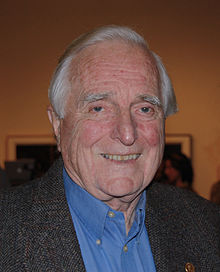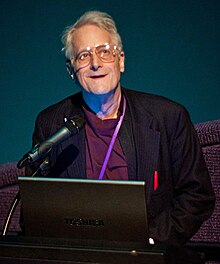Electronic literature or digital literature is a genre of literature encompassing works created exclusively on and for digital devices, such as computers, tablets, and mobile phones.
A work of electronic literature can be defined as "a construction whose
literary aesthetics emerge from computation", "work that could only
exist in the space for which it was developed/written/coded—the digital
space".
This means that these writings cannot be easily printed, or cannot be
printed at all, because elements crucial to the text are unable to be
carried over onto a printed version. The digital literature world
continues to innovate print's conventions all the while challenging the
boundaries between digitized literature and electronic literature. Some
novels are exclusive to tablets and smartphones for the simple fact that
they require a touchscreen.
Digital literature tends to require a user to traverse through the
literature through the digital setting, making the use of the medium
part of the literary exchange. Espen J. Aarseth wrote in his book Cybertext: Perspectives on Ergodic Literature
that "it is possible to explore, get lost, and discover secret paths in
these texts, not metaphorically, but through the topological structures
of the textual machinery".
Definitions
It
is difficult to accurately define electronic literature. The phrase
itself consists of two words, each with their own specific meanings.
Arthur Krystal in What Is Literature explains that "lit(t)eratura referred to any writing formed with letters".
However, Krystal goes on to explore what literature has transformed
into: "a record of one human being's sojourn on earth, proffered in
verse or prose that artfully weaves together knowledge of the past with a
heightened awareness of the present in ever new verbal configurations".
Electronic denotes anything "of, relating to, or being a medium...by
which information is transmitted electronically".
Thus electronic literature can be considered a branch from the main
tree of literature. Katherine Hayles discusses the topic in the online
article Electronic Literature: What Is It.
She argues "electronic literature, generally considered to exclude
print literature that has been digitized, is by contrast 'digital born',
and (usually) meant to be read on a computer". A definition offered by
the Electronic Literature Organization
(ELO) states electronic literature "refers to works with an important
literary aspect that takes advantage of the capabilities and contexts
provided by the stand-alone or networked computer".
On its official website, the ELO offers this additional definition of electronic literature as consisting of works which are:
- E-books, hypertext and poetry, on and off of the Web
- Animated poetry presented in graphical forms, for example Flash and other platforms
- Computer art installations, which ask viewers to read them or otherwise have literary aspects
- Conversational characters, also known as chatterbots
- Interactive
- Novels that take the form of emails, SMS messages, or blogs
- Poems and stories that are generated by computers, either interactively or based on parameters given at the beginning
- Collaborative writing projects that allow readers to contribute to the text of a work
- Literary performances online that develop new ways of writing
While the ELO definition incorporates many aspects that are applied
in digital literature, the definition lacks any solid guidelines and
also fails to recognize literature created on social media platforms
including Twitterature.
With the apparent vagueness, many debate on what truly qualifies as a
piece of e-literature. A large number of works fall through the cracks
of the imprecise characteristics that generally make up electronic
literature.
History
A
gradual transition into the digital world began with new advancements in
technology to makes things more efficient and accessible. This is
comparable to the release of the printing press in the 15th century, as
people did not consider it a major contributor to literature at first.
In the 1960s and 1970s, the creation of the personal computer allowed
people to begin expanding literature into the electronic realm.
Predecessors
In 1877, spoken word recordings began with the invention of the phonograph. In the 1930s, the first "talking book" recordings were made to hold short stories and book chapters. The 1970s were when the term "audiobook" became part of the vernacular as cassette tapes entered the public. 1971 was the year officially accepted as the year of the first e-book.
Although there were several contenders to the invention of an
"electronic book" prior to this, Michael Hart, the founder of the Gutenberg Project, has been accepted as the official inventor of the e-book after creating a digital copy of the Declaration of Independence.
Early history
In 1975–76, Will Crowther programmed a text game named Colossal Cave Adventure (also known as Adventure).
Considered one of the earlier computer adventure games, it possessed a
story that had the reader make choices on which way to go. These choices
could lead the reader to the end, or to his or her untimely death. This
non-linear format was later mimicked by the text adventure game, Zork,
created by a group of MIT students in 1977–79. These two games are
considered to be the first examples of interactive fiction as well as
some of the earliest video games.
The earliest pieces of electronic literature as presently defined were
created using Storyspace, software developed by Jay David Bolter and Michael Joyce in the 1980s.
They sold the software in 1990 to Eastgate Systems, a small software
company that has maintained and updated the code in Storyspace up to the
present. Storyspace and other similar programs use hypertext to create links within text. Literature using hypertext is frequently referred to as hypertext fiction. Originally, these stories were often disseminated on discs and later on CD. Hypertext fiction is still being created today using not only Storyspace, but other programs such as Twine.
Modern
While
hypertext fiction is still being made and interactive fiction created
with text stories and images, there is a discussion over the term,
"literature" being used to describe video games. Though Adventure and Zork
are considered video games, advancements in technology have evolved
video gaming mediums from text to action and back to text. More often
than not, video games are told as interactive literature where the
player makes choices and alters the outcome of the story. The video game
Mass Effect's story is entirely based around these choices, and Mass Effect 3
is an even better example, changing character interactions with the
player character and how the game ends is based on the player's actions.
In other instances the games are a story and the player exists to move the plot along. Journey, a game by Thatgamecompany
released in 2012 for the PlayStation 3, is more story than game. The
titular "journey" is the trek the player takes from start to finish as a
character with limited mobility and world interaction. While the player
can play with one other player at a time on the network, they cannot
communicate through traditional means. With no actual words, this game
takes the player through a world from prologue to epilogue.
In Espen Aarseth's Cybertext: Perspectives on Ergodic Literature, he defines "ergodic literature" as literature where "nontrivial effort is required to allow the reader to traverse the text".
An example from Aarseth states, "Since writing always has been a
spatial activity, it is reasonable to assume that ergodic textuality has
been practiced as long as linear writing. For instance, the wall
inscriptions of the temples in ancient Egypt were often connected
two-dimensionally (on one wall) or three-dimensionally (from wall to
wall and from room to room), and this layout allowed a nonlinear
arrangement of the religious text in accordance with the symbolic
architectural layout of the temple." Using these examples hypertext
fiction and interactive fiction can be considered ergodic literature,
and under the umbrella of interactive fiction, so can video games.
Electronic literature continues to evolve.
Preservation and archiving
Electronic literature, according to Hayles,
becomes unplayable after a decade or less due to the "fluid nature of
media". Therefore, electronic literature risks losing the opportunity to
build the "traditions associated with print literature". On the other hand, classics such as Michael Joyce's afternoon, a story
(1987) are still read and have been republished on CD, while simple
HTML hypertext fictions from the 1990s are still accessible online and
can be read in modern browsers.
Several organizations are dedicated to preserving works of electronic literature. The UK-based Digital Preservation Coalition
aims to preserve digital resources in general, while the Electronic
Literature Organization's PAD (Preservation / Archiving / Dissemination)
initiative gave recommendations on how to think ahead when writing and
publishing electronic literature, as well as how to migrate works
running on defunct platforms to current technologies.
The Electronic Literature Collection is a series of anthologies of electronic literature published by the Electronic Literature Organization,
both on CD/DVD and online, and this is another strategy in working to
make sure that electronic literature is available for future
generations.
The Maryland Institute for Technologies in the Humanities and the Electronic Literature Lab at Washington State University - Vancouver also work towards the documentation and preservation of electronic literature and hypermedia.
Notable people and works
Noteworthy authors, critics, and works associated with electronic literature include:
Robert Coover,
a professor of creative writing at Brown University, helped bring Talan
Memmott to the university as its first graduate fellow of electronic
writing.
Pry, a novella, a collaboration between Danny Cannizzaro and
Samantha Gorman (also known as Tender Claws). It is an electronic
literature application for phones and tablets. By utilizing the
touch-based gestures used on tablets, Pry proves to be a very dynamic
approach to the emerging e-lit genre. The use of these gestures allow
the reader to dig beneath the story at the surface of Pry.
Game, game, game and again game (2008), Nothing you have done deserves such praise (2013), I made this. you play this. we are enemies (2009), and Scrape Scraperteeth (2011) are important examples of the intersection of games and poetry. They are created by digital poet and net-artist Jason Nelson whose career has been devoting to exploring interface, interactivity, and surrealism within electronic literature.







